So, have you ever wondered about the rich and vibrant Thai dance culture? You know, the beautiful, graceful movements and intricate costumes that are the essence of Thai traditional performances. Well, in this article, we’re going to dive into the world of Thai dance and explore its fascinating history, styles, and significance. Trust me, you’re in for a treat!
Thailand is known for its rich cultural heritage, and its dance traditions are no exception. Thai dance is a captivating art form that has been passed down through generations, with each dance telling a unique story. From classical dances like the Khon, which showcases the ancient stories of the Ramakien, to folk dances like the Ramwong, which is performed by couples at social gatherings, Thai dance offers a diverse range of styles and genres.
The costumes used in Thai dance are a sight to behold. Elaborate dresses, adorned with sequins, jewels, and vibrant colors, are a stunning visual representation of Thai culture. These costumes, along with graceful hand gestures and expressive facial expressions, captivate audiences and transport them to a world of enchantment.
But wait, there’s so much more to learn about Thai dance! In the upcoming article, we’ll delve deeper into the different types of Thai dance, the cultural significance behind each performance, and the best places to experience this mesmerizing art form in Thailand. So stay tuned and get ready to immerse yourself in the vibrant world of Thai dance!
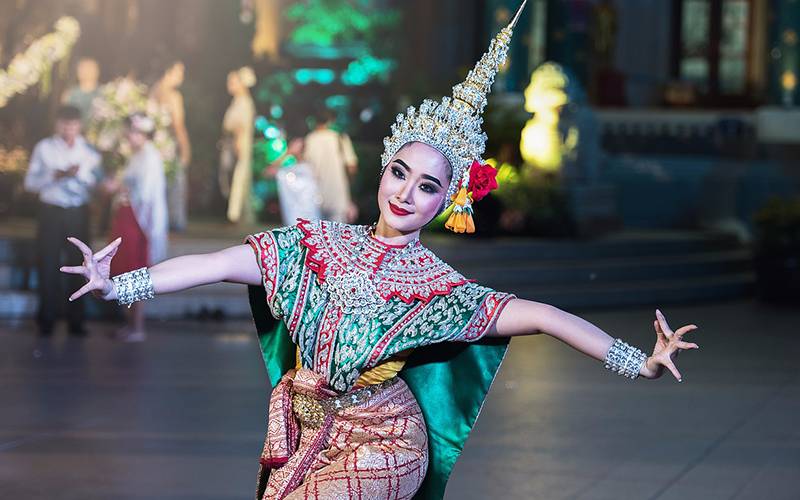
Overview of Thai Dance Culture
Thai dance is a vibrant and significant aspect of Thai culture, deeply rooted in history and tradition. It encompasses a wide range of forms, each with its own unique style and purpose. As a visitor to Thailand, exploring the world of Thai dance can provide an immersive experience into the country’s rich cultural heritage. From the elaborate costumes and intricate movements to the traditional music and storytelling, Thai dance offers a captivating and memorable glimpse into the soul of Thailand.
Definition and significance of Thai dance
Thai dance can be described as a form of artistic expression that combines graceful movements, symbolic gestures, and storytelling to convey cultural values, myths, and historical events. It holds immense significance in Thai society, serving as a means of preserving cultural traditions and promoting a sense of national identity and pride. Thai dance is deeply ingrained in religious ceremonies, festivals, and various social occasions, making it an integral part of Thai life.
Historical roots and evolution of Thai dance
Thai dance has its origins in ancient rituals and ceremonies performed by indigenous tribes inhabiting the region that is now modern-day Thailand. Over time, influences from neighboring countries such as India, China, and Cambodia shaped and enriched Thai dance, giving rise to distinct regional variations. The art form reached its pinnacle during the Ayutthaya Kingdom (1351-1767), when the royal court played a pivotal role in the development and refinement of Thai dance. Today, Thai dance continues to evolve, embracing contemporary influences while preserving its traditional essence.
Role of Thai dance in Thai culture
Thai dance plays a multifaceted role in Thai culture. It serves as a form of entertainment, captivating audiences with its beauty and artistry. It is also deeply intertwined with religious practices, often performed during temple ceremonies and important Buddhist festivals. Thai dance is a source of national pride, showcasing the unique cultural heritage of the Thai people. It is also a means of storytelling, conveying myths, legends, and historical narratives. Furthermore, Thai dance fosters a sense of community and social cohesion, drawing people together through shared experiences and celebrations.
Traditional Thai Dance Forms
Khon: The masked dance-drama
Khon is a classical Thai dance-drama that combines elaborate costumes, intricate choreography, and masked performers. It originated from the royal court and is based on episodes from the Ramakien, the Thai adaptation of the Indian epic, Ramayana. Khon showcases the battle between the virtuous Prince Rama and the demon king, Thotsakan, with the characters adorned in exquisite, handcrafted masks that depict various mythical creatures. The movements in Khon are highly stylized and require years of training to master. This cherished tradition continues to enthrall audiences with its grandeur and dramatic storytelling.
Fon Phu Thai: The folk dance of the Phu Thai ethnic group
Fon Phu Thai is a folk dance originating from the Phu Thai ethnic group, predominantly residing in Isan, the northeastern region of Thailand. This lively dance is characterized by energetic movements and colorful costumes adorned with intricate embroidery. Fon Phu Thai tells tales of everyday life, love, and agricultural practices, serving as a means of preserving the cultural heritage of the Phu Thai people. The dance is often performed during local festivals and celebrations, providing a glimpse into the unique traditions of this particular ethnic community.
Ram Thai: The dance-drama based on the Ramakien epic
Ram Thai, also known as Khon Ram or Khon Ramakien, is another dance-drama form that draws inspiration from the Ramakien epic. It shares similarities with Khon, but is performed without masks and showcases a more subdued and refined style of dancing. Ram Thai combines graceful movements, intricate hand gestures, and expressive facial expressions to convey the emotions and narratives of the epic. The performances often feature live orchestral music and vocalists, creating a mesmerizing fusion of movement and sound.
Likay: The lively dance-theater fusion
Likay is a unique dance-theater form that originated during the Ayutthaya Kingdom, blending elements of dance, music, and comedy. It features lively and comedic performances, often accompanied by traditional musical instruments such as the khene (a bamboo mouth organ) and the saw duang (a two-stringed fiddle). Likay performers engage with the audience, improvising and incorporating contemporary references into their acts. This entertaining and interactive form of Thai dance has remained popular throughout the centuries and continues to delight audiences with its lively energy and humor.
Mahori: The classical ensemble dance
Mahori is a classical ensemble dance performed to traditional Thai music. It involves a group of musicians playing melodic instruments such as the ranat ek (a wooden xylophone), the chakhe (a vertical drum), and the glong tchap (a set of small kettle drums). The dancers, adorned in colorful costumes, synchronize their movements with the music, creating a harmonious and visually captivating performance. Mahori can be performed as a solo, duo, or group dance, with each dancer displaying their technical skill and grace.
Mor Lam: The spirited folk dance of the northeastern region
Mor Lam, also known as Molam, is a lively folk dance originating from the northeastern region of Thailand, Isan. It is accompanied by the traditional music of the same name, characterized by the soulful sound of the khaen (a bamboo mouth organ) and the energetic beats of the phin (a string instrument). Mor Lam tells stories of love, rural life, and the struggles faced by the Isan people. The dance features spirited movements, dynamic footwork, and vibrant costumes, reflecting the joy and resilience of the region’s inhabitants.
Costumes and Accessories in Thai Dance
Elaborate costumes and their symbolism
Thai dance costumes are elaborate creations, meticulously crafted using vibrant fabrics and intricate patterns. Each costume is designed to reflect the character, narrative, and style of the dance form. For example, Khon costumes are adorned with shimmering sequins, jewels, and intricate gold threadwork, symbolizing the regal nature of the characters. Fon Phu Thai costumes showcase the traditional weaving techniques and embroidery of the Phu Thai people, incorporating motifs inspired by nature and agricultural practices.
Headpieces and masks used in specific dances
Headpieces and masks are an integral part of specific Thai dance forms, adding an element of mystery and allure to the performances. In Khon, performers wear elaborate, handcrafted masks depicting various characters, including demons, gods, and animals. These masks are created by skilled artisans and are considered works of art in their own right. Ram Thai dancers, on the other hand, wear ornate, tiara-like headpieces that complement their costumes and add to the grace and elegance of their movements.
Significance of traditional jewelry and accessories
Traditional jewelry and accessories play an important role in Thai dance, adding a touch of elegance and authenticity to the performances. Dancers wear intricately designed necklaces, bracelets, and anklets, often adorned with precious gemstones such as rubies and emeralds. These accessories serve as symbols of beauty, status, and cultural heritage. The use of traditional jewelry and accessories also helps to highlight specific gestures and movements, enhancing the visual appeal of the dance.
Instruments and Music in Thai Dance
Traditional musical instruments accompanying Thai dance
Thai dance is intimately connected with traditional Thai music, which is performed using a wide array of instruments. The pi nai (a Thai oboe), the ranat thum (a wooden xylophone), and the taphon (a barrel-shaped drum) are commonly used in Khon performances, infusing the dances with a regal and majestic atmosphere. Mahori dance is accompanied by a variety of melodic, rhythmic, and percussive instruments, including the sueng (a string instrument), the khlui (a flute), and the ching (a set of finger cymbals). These instruments create a symphony of sounds that enhance the mood and emotions of the dance.
Importance of melodies and rhythms in different dance forms
Melodies and rhythms play a crucial role in different Thai dance forms, setting the tone and pace of the performances. In Khon, the music follows specific patterns and melodies that correspond to the movements and gestures of the dancers, creating a seamless integration of sound and movement. Likay performances rely heavily on catchy tunes and lively rhythms, complementing the energetic and comedic nature of the dance. The melodies and rhythms in Mahori and Mor Lam contribute to the emotional depth and ambiance of the dances, evoking feelings of joy, longing, and resilience.
Role of live musicians and their training
Live musicians are an essential component of Thai dance performances, providing the accompanying music that breathes life and energy into the dances. Musicians undergo rigorous training to master their respective instruments and learn the intricacies of Thai musical traditions. They must possess a deep understanding of the specific dance forms they are accompanying, as well as the ability to improvise and adapt to the nuances of each performance. The skill and expertise of live musicians greatly contribute to the overall quality and impact of Thai dance presentations.
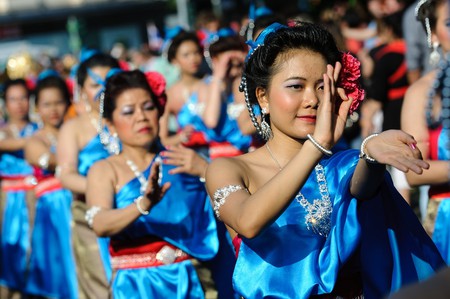
Training and Education in Thai Dance
Traditional dance schools and academies in Thailand
Thai dance is taught and passed down through generations in traditional dance schools and academies throughout Thailand. These institutions provide a structured and disciplined environment for aspiring dancers to learn the art form. Students receive comprehensive training in various dance forms, including Khon, Ram Thai, Mahori, and Likay, among others. They learn the intricate movements, gestures, and expressions specific to each style, as well as the cultural and historical background that informs the dances. Traditional dance schools and academies play a crucial role in preserving and promoting Thai dance as a living tradition.
Importance of discipline and dedication in learning Thai dance
Learning Thai dance requires immense discipline, dedication, and perseverance. Students undergo rigorous training, often starting from a young age, to develop the strength, flexibility, and technical skill necessary for the precise and graceful movements. They must commit themselves to countless hours of practice, honing their craft and embodying the cultural values embedded in Thai dance. Discipline and dedication are considered essential traits for aspiring dancers, enabling them to master the art form and contribute to the preservation and evolution of Thai dance.
Role of experienced teachers in passing down the art form
Experienced teachers are instrumental in passing down the art form of Thai dance to future generations. These teachers, often respected and revered figures within the dance community, possess a deep knowledge and understanding of the various dance forms. They impart their expertise through a combination of practical demonstrations, theoretical instruction, and personal guidance. Experienced teachers not only teach the technical aspects of dance but also instill the cultural and historical context, the values, and the emotional depth behind the movements. Their guidance and mentorship are invaluable in shaping the next generation of Thai dancers.
Significance of Gestures and Movements
Hand gestures (mudras) and their meanings
Hand gestures, known as mudras, are a fundamental component of Thai dance. Each mudra carries its own specific meaning, allowing dancers to convey emotions, characters, and concepts without the need for words. For example, the “kaew” mudra, where the thumb and little finger are extended while the other fingers are bent, signifies femininity and grace. The “dong” mudra, in which the thumbs touch the index fingers, represents demons or magical beings. The precise execution and alignment of mudras are integral to the overall storytelling and aesthetics of Thai dance.
Facial expressions and their role in storytelling
Facial expressions play a crucial role in Thai dance, as they convey the emotions, intentions, and narrative of the performance. Dancers use their expressions to depict joy, sorrow, anger, and a range of other feelings. The eyes, eyebrows, mouth, and cheek muscles are all carefully controlled to communicate specific emotions and portray different characters. Expressions can change rapidly, allowing dancers to transition seamlessly between various moods and roles. The mastery of facial expressions adds an extra layer of depth and authenticity to Thai dance, creating a captivating and immersive experience for the audience.
Graceful movements and their connection to Thai cultural values
Thai dance is characterized by its graceful and fluid movements, which are deeply rooted in Thai cultural values. Dancers strive to achieve a sense of balance, poise, and elegance, embodying the qualities of a mythical celestial being called an apsara. These movements reflect Thai concepts such as “kreng jai” (politeness), “ram wong” (natural beauty), and “lakhon lai” (subtle refinement). Thai dance teaches practitioners the importance of harmony, respect, and restraint, both in movement and in life. The gracefulness of Thai dance movements serves as a reflection of Thai cultural values and aesthetics.
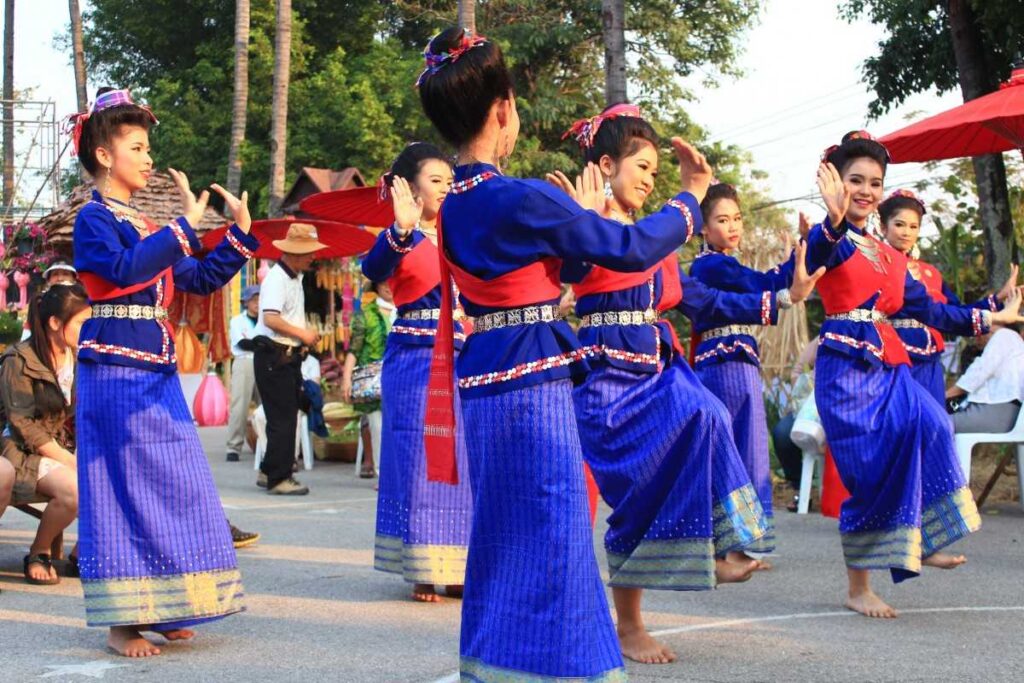
Regional Variations in Thai Dance
Distinct dance styles in Northern Thailand
Northern Thailand boasts a rich and distinct dance tradition, influenced by its proximity to neighboring countries such as Laos and Myanmar. Dance forms such as the Fawn Leb and the Sab Lai focus on slow, graceful movements and elegant hand gestures. These dances often depict legendary characters and are performed with live music accompaniment, consisting of traditional instruments like the khene and the kaen (a traditional Lao mouth organ). The dances of Northern Thailand embody the region’s cultural heritage and offer a glimpse into its unique traditions and history.
Regional influences on Southern Thai dance
Southern Thai dance, by contrast, bears influences from the neighboring regions of Malaysia and Indonesia. The movements in Southern Thai dance are more dynamic and rhythmic, reflecting the influence of the Malay martial arts and traditional dance styles. Dances such as Manora and Dambok Khao Lam often tell stories of love, bravery, and the struggles faced by the local communities. The costumes in Southern Thai dance are intricately designed, incorporating elements of Malay and Javanese cultural traditions. The unique blend of influences in Southern Thai dance showcases the cultural diversity and historical connections of the region.
Unique characteristics of Central Thai dance
Central Thai dance, which is strongly associated with the royal court, embraces a refined and elegant style. It draws inspiration from both the Khon and Ram Thai dance-drama forms, incorporating intricate choreography and graceful movements. Central Thai dance is performed during significant ceremonies, such as royal occasions and temple festivities. The performers wear elaborate costumes adorned with intricate embroidery and jewels, reflecting the grandeur and splendor of the royal court. Central Thai dance showcases the sophistication and cultural richness that has been fostered at the heart of Thailand for centuries.
Folk dances specific to Eastern and Western regions
The Eastern and Western regions of Thailand also have their own distinct folk dances, each reflecting the unique traditions and customs of the local communities. In the Eastern region, dances such as Lam Klawn and Lam Phloen are popular forms of entertainment during local festivals and social gatherings. These dances feature energetic movements, vibrant costumes, and catchy melodies. In the Western region, dances such as the Fawn Tawng and the Fawn Thai Prasert celebrate the agricultural heritage of the region, incorporating movements inspired by farming and rural life. These folk dances exemplify the diversity and cultural richness found throughout Thailand.
Thai Dance Performances and Festivals
Major venues for Thai dance performances
Thai dance performances can be enjoyed in various venues throughout the country. The National Theatre in Bangkok is a prominent location for watching traditional Thai dance, offering regular performances by renowned dance troupes. Other notable venues include the Sala Chalermkrung Royal Theatre in Bangkok, Chiang Mai Cultural Centre in Chiang Mai, and the Phuket Cultural Show in Phuket. These venues provide opportunities for visitors to witness the artistry and beauty of Thai dance in its traditional settings, allowing for an immersive and memorable cultural experience.
Popular Thai dance festivals and events
Thai dance is celebrated with fervor and enthusiasm during numerous festivals and events held throughout the year. The Royal Barge Procession, held on the Chao Phraya River in Bangkok, features stunning displays of traditional dances performed on elaborately decorated barges. The Chiang Mai Flower Festival showcases vibrant dances and costumes alongside spectacular floral displays. The Phi Ta Khon festival in Loei province is known for its exuberant masked dances, accompanied by traditional music and lively celebrations. These festivals offer visitors a chance to witness the vibrancy and diversity of Thai dance, while also experiencing the festive atmosphere and cultural traditions of Thailand.
Significance of dance competitions and awards
Dance competitions and awards play a crucial role in recognizing and promoting excellence in Thai dance. They provide a platform for talented dancers to showcase their skills, creativity, and dedication. The annual Thai Dance Naiyana competition, organized by the Ministry of Culture, is one such prestigious event that brings together dancers from across the country. Winners of these competitions receive accolades and recognition, helping to further their careers and inspire the next generation of dancers. Dance competitions and awards contribute to the continuous development and evolution of Thai dance, fostering innovation and pushing the boundaries of traditional forms.
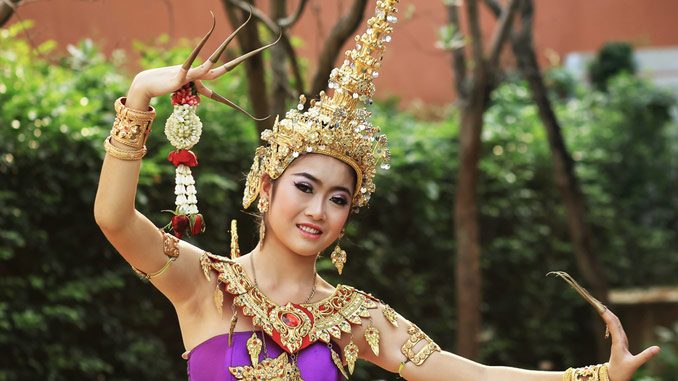
Cultural Significance of Thai Dance
Connection between Thai dance and religious ceremonies
Thai dance is deeply intertwined with religious ceremonies and practices, serving as a means of honoring the spiritual beliefs of the Thai people. Many traditional dances are performed during important Buddhist festivals, such as Loy Krathong and Songkran, as a way to express devotion and gratitude. Dances such as the Fawn Tian often accompany rituals performed by Buddhist monks, providing a visual representation of sacred texts and teachings. The connection between Thai dance and religious ceremonies highlights the profound spiritual and cultural significance of the art form in Thai society.
Thai dance as a means of storytelling and cultural preservation
Thai dance serves as a powerful medium for storytelling, conveying myths, legends, and historical narratives to audiences. The precise movements, gestures, and facial expressions in Thai dance are carefully choreographed to communicate complex stories and emotions without the need for words. By performing traditional dances, dancers help preserve cultural traditions and transmit knowledge from one generation to the next. Thai dance plays a vital role in maintaining cultural identity and ensuring the continuity of traditions that have shaped Thai society for centuries.
Impact of Thai dance on national identity and pride
Thai dance plays a significant role in shaping national identity and fostering a sense of pride among the Thai people. The art form embodies the unique cultural heritage of Thailand, reflecting its history, values, and aesthetic sensibilities. Thai dance serves as a source of national pride, allowing Thai people to celebrate their cultural roots and showcase their artistic excellence on a global stage. The popularity and recognition of Thai dance worldwide contribute to a sense of national identity and elevate Thailand’s cultural standing in the international community.
Influence of Thai Dance on Contemporary Arts
Integration of traditional Thai dance in modern performances
Traditional Thai dance has found its place alongside contemporary arts in various interdisciplinary performances. Choreographers and artists draw inspiration from Thai dance forms, incorporating their movements, gestures, and aesthetics into modern dance productions. This integration allows for the exploration of new artistic possibilities and the creation of innovative performances that bridge the gap between tradition and modernity. The integration of traditional Thai dance in modern performances offers a fresh perspective on Thai cultural heritage and enables its continued relevance in the contemporary arts scene.
Collaborations between Thai dancers and international artists
Thai dancers often collaborate with international artists, contributing to the cross-cultural exchange of ideas and techniques. These collaborations allow for the fusion of diverse dance styles, music genres, and visual elements, creating unique and captivating performances. Thai dancers have performed alongside renowned international dance companies, such as the Royal Ballet in London and the Paris Opera Ballet, showcasing the versatility and technical skill of Thai dance on an international stage. Collaborations between Thai dancers and international artists enrich the artistic landscape and contribute to the global appreciation of Thai dance.
Using Thai dance as inspiration for contemporary choreography
Thai dance serves as an abundant source of inspiration for contemporary choreographers in Thailand and around the world. The intricate movements, symbolic gestures, and emotive storytelling found in Thai dance offer a rich tapestry of ideas and concepts that can be reimagined and incorporated into contemporary choreography. Contemporary dancers and choreographers infuse Thai dance elements with their own unique styles and interpretations, resulting in fresh and innovative works that push the boundaries of traditional forms. Using Thai dance as inspiration for contemporary choreography ensures the continued evolution and relevance of the art form in a rapidly changing world.
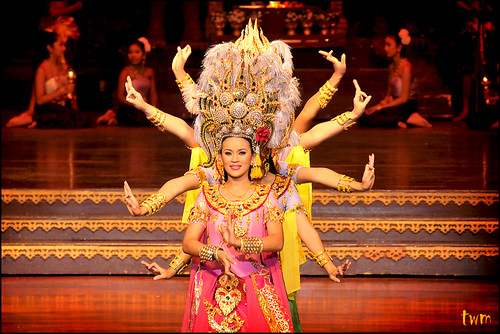
Challenges and Future of Thai Dance
Preserving and promoting Thai dance in the face of globalization
As Thailand’s cultural landscape continues to evolve, the preservation and promotion of Thai dance face significant challenges. The growing influence of globalization, with its influx of foreign cultural forms, poses a risk of diluting traditional practices and overshadowing local art forms. Efforts must be made to ensure the continued recognition and appreciation of Thai dance as an integral part of Thai cultural heritage. Through education, research, and increased exposure, Thai dance can be preserved and celebrated, allowing future generations to inherit and cultivate this vibrant art form.
Maintaining authenticity while adapting to changing times
While it is important to preserve the authenticity and integrity of Thai dance, it is equally crucial to adapt and evolve with changing times. Thai dance must remain relevant and resonate with contemporary audiences. This requires striking a balance between honoring tradition and embracing innovation. Choreographers and performers can explore new interpretations and incorporate modern elements without compromising the essence and foundations of Thai dance. By embracing innovation, Thai dance can continue to captivate audiences and contribute to the cultural landscape of Thailand.
Role of government support and cultural institutions
Government support and the establishment of cultural institutions play a vital role in the preservation and promotion of Thai dance. The government can allocate resources for the documentation, research, and archiving of traditional dance forms. Cultural institutions can provide platforms for performances, exhibitions, and educational programs, fostering an environment conducive to the development and dissemination of Thai dance. Comprehensive policies, funding, and infrastructure must be put in place to nurture and support the growth of Thai dance, ensuring its continued vibrancy and accessibility for generations to come.
Tourism and Thai Dance
Thai dance performances as tourist attractions
Thai dance performances have emerged as popular tourist attractions, allowing visitors to immerse themselves in the cultural heritage of Thailand. Numerous venues across the country offer traditional dance shows that showcase various forms of Thai dance, providing an opportunity for visitors to experience the beauty and artistry firsthand. Thai dance performances are often accompanied by live music, colorful costumes, and mesmerizing movements, leaving a lasting impression on tourists and enriching their understanding of Thai culture.
Impact of tourism on the visibility and development of Thai dance
Tourism has played a significant role in promoting the visibility and development of Thai dance. International travelers attending Thai dance performances not only contribute to the appreciation and recognition of Thai dance but also serve as ambassadors, sharing their experiences and insights with people from around the world. The demand from tourists has sparked the creation of dedicated dance troupes and cultural centers that cater to visitors interested in experiencing Thai dance. The exposure generated through tourism provides an impetus for the preservation and revitalization of Thai dance traditions.
Cultural tourism experiences centered around Thai dance
Cultural tourism experiences centered around Thai dance have emerged as sought-after activities for travelers seeking immersive and authentic experiences. These experiences often include workshops, where participants can learn basic Thai dance movements, try on traditional costumes, and receive guidance from experienced Thai dancers. Cultural tourism packages may also include opportunities to witness rehearsals, meet with artists, or attend exclusive performances. These experiences offer a deeper understanding of Thai culture, allowing travelers to appreciate the intricacies and artistry of Thai dance firsthand.
Appreciating the Artistry of Thai Dance
Understanding the intricate movements and symbolism
To fully appreciate the artistry of Thai dance, it is essential to understand the intricate movements and symbolism that underpin each performance. Paying attention to the gestures, footwork, and expressions can reveal the depth of meaning embedded within the dance. The precise hand movements, carefully coordinated footwork, and subtle expressions are all integral to conveying specific emotions, characters, and stories. By understanding the technical aspects and symbolism of Thai dance, audiences can engage with the performances on a deeper level, appreciating the craftsmanship and cultural significance behind each movement.
Experiencing the emotional depth and storytelling
Thai dance is more than just physical movements; it is a medium for emotional expression and storytelling. Each dance form conveys a range of emotions, telling narratives that evoke joy, sadness, love, or triumph. By witnessing and experiencing Thai dance performances, audiences can connect with the emotional depth and richness of the stories being told. As the dancers gracefully weave their way through intricate movements and convey the subtleties of human emotions, audiences are transported into a world of myth, legend, and cultural heritage.
Importance of audience support and encouragement
Audience support and encouragement play a vital role in the continued growth and evolution of Thai dance. Applauding the performers, expressing appreciation, and actively participating in cultural events fosters a sense of community and enthusiasm for Thai dance. By attending performances, engaging with the art form, and spreading awareness, audiences contribute to the preservation and promotion of Thai dance. The energy and enthusiasm from the audience serve as a source of inspiration for dancers, encouraging them to continue honing their skills and sharing their art with the world.
Conclusion
Exploring the vibrant Thai dance culture offers a mesmerizing journey into the heart and soul of Thailand. From the grandeur of Khon and Ram Thai to the lively energy of Likay and Mor Lam, each dance form tells a unique story and embodies a distinct facet of Thai culture. Thai dance is not only a form of artistic expression but also a powerful means of preserving cultural traditions, promoting national identity, and fostering community spirit. The enduring beauty and cultural significance of Thai dance deserve continued appreciation and support to ensure its preservation and evolution for generations to come. Whether as a spectator or a participant, immersing yourself in the world of Thai dance promises an enriching and unforgettable experience.
